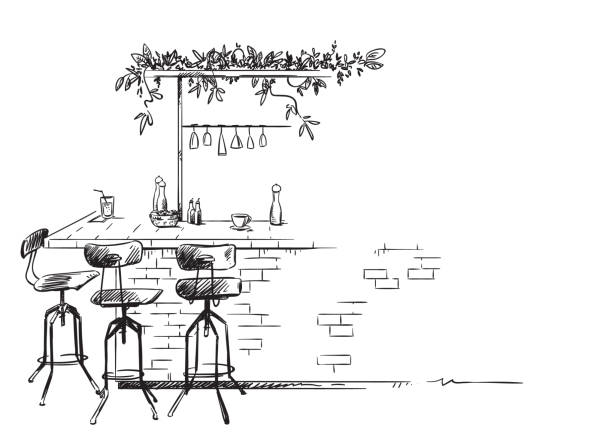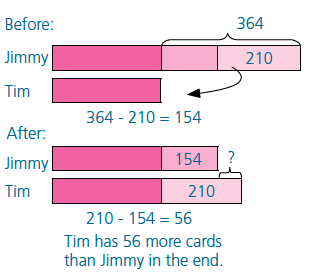Discover how students can master problem solving with bar model drawing techniques
Wiki Article
Exploring Bar Design Drawing Techniques: A Comprehensive Guide to Picturing Mathematics Concepts
Bar model attracting methods offer as an important resource for both instructors and pupils in envisioning mathematical ideas. These models streamline complex numerical connections, aiding in the comprehension of enhancement, department, multiplication, and subtraction. This overview lays out reliable strategies for implementing bar models, cultivating energetic interaction and real-world connections. As visitors check out the useful applications and training tips, they will uncover just how these techniques can transform their technique to maths.Understanding the Basics of Bar Version Drawing
Bar design attracting functions as a powerful visual tool in maths, promoting the understanding of mathematical connections and analytic approaches. This technique entails standing for numbers and their partnerships through rectangle-shaped bars, making it less complicated to picture operations such as addition, multiplication, subtraction, and department. Each bar's length represents a particular worth, enabling learners to contrast amounts and comprehend proportions plainly.To produce a bar model, one starts by identifying the problem's crucial elements, often breaking it down into parts that can be visually represented. For instance, in an easy enhancement problem, two bars can be attracted, with their sizes standing for the addends. The combined length shows the amount. In enhancement, bar designs can be adjusted for extra complicated problems, including proportions and portions, by readjusting the bars accordingly. Understanding these essentials lays a strong structure for reliable analytical and much deeper mathematical understanding.
Benefits of Utilizing Bar Versions in Mathematics
Using bar designs in maths supplies various advantages that improve knowing and comprehension. These graphes help students in understanding intricate ideas by breaking them down into workable parts. Bar models give a clear framework for illustrating partnerships between numbers, making abstract ideas extra concrete. They advertise a deeper understanding of mathematical procedures and help with analytical by allowing learners to picture the data they are working with.Additionally, bar models support the growth of vital assuming skills, as pupils should examine and interpret the visual info to reason. This technique urges energetic interaction with the material, strengthening retention and mastery of mathematical principles. By promoting a solid foundation in visual literacy, bar models empower learners to approach numerous mathematical obstacles with self-confidence. In general, the integration of bar designs into mathematics education shows useful in growing both understanding and logical abilities among pupils.
Using Bar Models to Enhancement and Reduction
Bar designs offer as an effective device for aesthetically standing for enhancement and reduction issues. By highlighting the connection in between numbers, they enhance understanding and facilitate analytic. Furthermore, real-life applications of these models can help learners realize mathematical ideas in practical contexts.Standing For Addition Aesthetically
Aesthetic help can substantially enhance their understanding of these procedures when pupils experience addition and reduction issues. Bar models function as reliable tools for representing enhancement. By splitting a rectangular shape into sections that represent the numbers included, students can picture the connection between the amounts. If a pupil needs to add 3 and 5, they can develop a bar separated into two sections: one area standing for 3 and the various other representing 5. This clear depiction not only streamlines the addition procedure however additionally strengthens the concept of integrating quantities. As students adjust these aesthetic help, they create a much deeper comprehension of enhancement, bring about enhanced analytical abilities and better self-confidence in their mathematical capabilities.
Reduction With Bar Models
Although reduction is often regarded as a much more intricate operation than addition, bar models can properly clarify this process for pupils. By visually standing for the amounts involved, pupils can better understand how numbers connect to each other. In a bar model for reduction, one bar represents the overall, while an additional suggests the quantity being subtracted. This visual distinction assists trainees realize the concept of "eliminating." If a bar shows 10 systems, and another bar representing 4 devices is eliminated, students can easily see that 6 systems stay. This method not only cultivates understanding of reduction yet additionally help in developing analytic abilities, enabling pupils to picture their mathematical thinking and enhance their overall comprehension of mathematical principles.Real-Life Application Instances
Comprehending subtraction through bar designs lays a structure for using these techniques in real-life circumstances. In numerous contexts, such as budgeting or purchasing, individuals can imagine just how much cash remains after expenditures. If a person has $50 and invests $20, a bar model can represent the total quantity and the invested part, showing that $30 is left. Additionally, parents can utilize bar designs to aid youngsters understand the number of more things require to be contributed to complete a set, such as having three apples and requiring 5. This aesthetic depiction streamlines complex problems, helping with understanding and retention. Eventually, bar designs function as effective devices in day-to-day decision-making, boosting mathematical understanding in sensible circumstances.Imagining Multiplication and Division With Bar Models
In checking out the application of bar versions for reproduction and division, it is important to grasp their fundamental concepts. Constructing reproduction versions enables learners to visualize relationships between numbers, while reliable department methods can be illustrated through these aesthetic aids. This method enhances understanding and analytic abilities in mathematics.Comprehending Bar Designs
Bar versions act as an effective visual device for highlighting the principles of reproduction and division. They allow learners to stand for mathematical relationships in a structured layout, promoting a deeper understanding of these procedures. In multiplication, bar models show teams of equal size, permitting individuals to visualize the overall quantity when incorporating these groups. Conversely, in division, bar versions assist portray how a total is divided into smaller, equal components, clarifying the concept of partitioning. By using these visual aids, pupils can realize the underlying principles of reproduction and department better. This technique not just enhances comprehension yet also supports analytic abilities, making bar models a very useful asset in mathematical education and learning.Building Multiplication Designs
Constructing multiplication designs utilizing bar representations provides a clear method for imagining the procedure of reproduction. These versions make it possible for learners to represent reproduction as groups of equal parts, making abstract principles more concrete. To illustrate (3 times 4), a student can attract one bar split right into three equal sections, each standing for 4 systems. Additionally, producing a second bar with the exact same length enhances the understanding of repeated enhancement, as each segment represents one group. This visual representation not just help in understanding multiplication but additionally improves analytic abilities. By utilizing bar designs, pupils can better understand connections between numbers and establish a durable structure for a lot more intricate mathematical principles, leading to increased self-confidence in their capacities.Envisioning Department Approaches

Solving Word Problems Utilizing Bar Version Techniques

In an issue entailing addition and reduction, trainees can draw separate bars for each quantity and then control them to find the solution. This process not only makes clear the issue however likewise promotes a much deeper theoretical understanding. Bar designs can be adjusted for various kinds of word problems, making them flexible throughout various mathematical subjects. Inevitably, using bar versions can greatly boost students' problem-solving skills by providing a clear aesthetic pathway to come to the right solution.
Integrating Bar Versions in Various Mathematics Topics
Bar models can be flawlessly incorporated right into numerous math subjects, boosting trainees' understanding of ideas past standard math. In algebra, these visual devices aid in standing for inequalities and equations, making it possible for students to imagine relationships in between variables. When taking on geometry, bar designs can illustrate the buildings of shapes and spatial reasoning, helping trainees understand concepts like area and boundary effectively. In data, bar models promote the interpretation of data sets, allowing students to contrast amounts and identify patterns visually. In addition, integrating bar versions within measurement subjects help in recognizing units and conversions by giving a substantial representation of quantities. By employing bar designs throughout various mathematical areas, instructors can foster a much deeper comprehension of complex concepts, consequently boosting analytical skills and advertising crucial thinking (bar model drawing techniques). This convenience demonstrates the utility of bar models as a foundational tool for pupils in their mathematical journeyTips for Teaching Bar Versions Efficiently
Incorporating bar versions into teaching methods requires thoughtful strategies to maximize their efficiency. Educators needs to begin by introducing bar designs with straightforward, relatable examples that trainees can quickly grasp. This assists to construct confidence and knowledge with the principle. Slowly raising the complexity of troubles allows students to apply their skills gradually. In addition, instructors need to urge pupils to produce their very own bar models, advertising energetic involvement and possession of their discovering.Including collaborative activities can also enhance understanding, as pupils review and resolve issues in teams. Continuous comments is necessary; educators ought to offer useful commentary on students' bar version representations to lead enhancement. Connecting bar designs to real-life circumstances enhances their significance, assisting trainees see the practical applications of their mathematical skills. By executing these approaches, educators can effectively harness the power of bar models in their mathematics instruction.
Often Asked Inquiries
Can Disallow Models Be Utilized in Various Other Topics Besides Math?
Bar versions can indeed be made use of in different topics past math. They efficiently illustrate concepts in science, social researches, and language arts, aiding to visually represent relationships, processes, and concepts for boosted understanding throughout techniques.What Age Group Is Ideal Fit for Discovering Bar Designs?
Bar versions are best suited for youngsters ages 7 to 12, as they establish concrete thinking abilities throughout this duration (bar model drawing techniques). At this age, pupils can successfully realize abstract concepts through visual representation and analytical techniquesExist Digital Devices for Creating Bar Designs?

Exactly How Can I Evaluate Pupil Understanding of Bar Models?
Evaluating pupil understanding of bar designs can entail tests, observational assessments, and team discussions. Teachers might also analyze trainees' finished models and their capacity to describe their thinking, ensuring a thorough examination of understanding.What Are Typical Blunders When Using Bar Versions?
Typical errors when making use of bar models include misstating amounts, failing to accurately identify bars, confusing addition and subtraction, ignoring to use constant scales, and ignoring the significance of clear aesthetic separation between different aspects.In addition, bar designs can be adapted for a lot more intricate issues, including ratios and portions, by adjusting the bars accordingly. Reduction is commonly perceived as a more complex procedure than addition, bar versions can successfully clarify this procedure for trainees. In a bar model for subtraction, one bar stands for the total, while another suggests the quantity being deducted. If a bar reveals 10 systems, and an additional bar representing 4 devices is eliminated, students can easily see that 6 units stay. When dividing a total right into equivalent groups, trainees can attract a long bar to represent the entire and then section it into smaller sized bars that show each team.
Report this wiki page